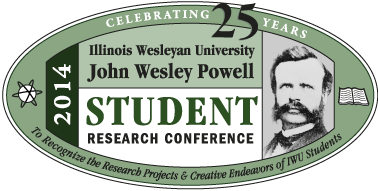The Use of Discourse Makers So and Entonces of a Spanish-English Bilingual Speaker
Submission Type
Event
Expected Graduation Date
2014
Location
Center for Natural Sciences, Illinois Wesleyan University
Start Date
4-12-2014 9:00 AM
End Date
4-12-2014 10:00 AM
Disciplines
Spanish and Portuguese Language and Literature
Abstract
A 2008 study on the use of discourse markers so and entonces suggests that markers from one language may replace markers from the other (Potowski). While this provides a foundation for further research, there has yet to be a study that takes into account possible psychological factors behind marker usage throughout a conversation. This study will not only account for the function of markers so and entonces, but also the emotion of the speaker in that moment of use, and the surrounding content of the conversation. Data will be collected through two fifteen-minute interviews with a bilingual individual. The goal will be to explore the connection between emotion, content, and marker function with the usage ratio of so to entonces. A description of these potential connections may provide insight into the psychology behind this widespread form of code-switching.
Potowski, K. (2008). A comparative study of bilingual discourse markers in Chicago Mexican, Puerto Rican, and MexiRican Spanish. International Journal of Bilingualism, 12(4), 263-279.
The Use of Discourse Makers So and Entonces of a Spanish-English Bilingual Speaker
Center for Natural Sciences, Illinois Wesleyan University
A 2008 study on the use of discourse markers so and entonces suggests that markers from one language may replace markers from the other (Potowski). While this provides a foundation for further research, there has yet to be a study that takes into account possible psychological factors behind marker usage throughout a conversation. This study will not only account for the function of markers so and entonces, but also the emotion of the speaker in that moment of use, and the surrounding content of the conversation. Data will be collected through two fifteen-minute interviews with a bilingual individual. The goal will be to explore the connection between emotion, content, and marker function with the usage ratio of so to entonces. A description of these potential connections may provide insight into the psychology behind this widespread form of code-switching.
Potowski, K. (2008). A comparative study of bilingual discourse markers in Chicago Mexican, Puerto Rican, and MexiRican Spanish. International Journal of Bilingualism, 12(4), 263-279.

